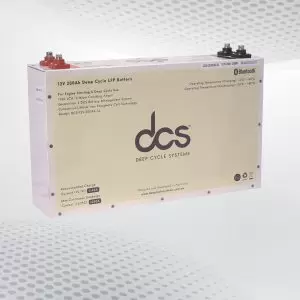The Future of Energy: Advances in Lithium Battery Technology

A Lithium Battery technology has become a key player in modern energy storage solutions due to its high energy density and lightweight characteristics. It has significantly transformed the landscape of portable electronics, electric vehicles, and renewable energy systems. Utilising lithium-ion technology, these batteries facilitate efficient energy storage and release, making them ideal for various applications. The efficiency and versatility of lithium batteries continue to drive innovations, supporting the transition towards more sustainable energy practices. The evolving nature of lithium battery technology highlights its potential to meet the growing demand for reliable and efficient energy storage solutions.
Historical Development of Lithium Battery
The journey of the lithium battery began in the 1970s with pioneering work on lithium metal batteries. Early challenges did not deter progress, and significant milestones were achieved with the development of lithium-ion batteries in the 1980s. Over subsequent decades, researchers focused on improving safety, efficiency, and cost-effectiveness. Materials science and electrochemistry advances led to notable enhancements, making lithium batteries more reliable and accessible. Collaborations between academia and industry further accelerated innovation, positioning lithium-ion technology as a leading energy storage solution. These historical developments have laid the foundation for current and future advancements in lithium battery technology, influencing a wide range of applications from consumer electronics to electric vehicles.
Basic Principles of Lithium Battery Pack Operation
A Lithium Battery Pack operates through the interaction of its anode, cathode, and electrolyte. The anode typically comprises graphite, while the cathode is made from lithium metal oxide. The electrolyte, often a lithium salt in an organic solvent, facilitates the movement of lithium ions between the anode and cathode.
Lithium ions migrate from the cathode to the anode, storing energy during charging. Conversely, these ions return to the cathode during discharge, releasing energy. This ion flow generates the electric current required to power various devices. The precise coordination of these components ensures efficient energy storage and retrieval, making lithium battery packs highly effective.
Advantages of Lithium-Battery Pack
Lithium battery packs stand out for their high energy density, enabling extended usage periods for various devices without frequent recharging. They are notably lightweight and ideal for portable applications and electric vehicles where weight reduction is critical. These batteries also offer a long lifespan, which reduces the frequency of replacements, contributing to cost savings over time. Fast charging capabilities further enhance their practicality, meeting the demands of a fast-paced lifestyle. Lithium batteries exhibit lower self-discharge rates than other battery types, maintaining their charge for more extended periods when not in use. Their versatility across various applications, from consumer electronics to renewable energy storage, underscores their widespread adoption.
Current Applications of Lithium Ion Battery Pack
Lithium-ion battery packs are central to the functionality of numerous consumer electronics, including smartphones, laptops, and tablets. In the automotive industry, they power electric vehicles, enabling longer driving ranges and promoting cleaner transportation options. Additionally, these batteries are integral to renewable energy systems, where they store energy generated from sources like solar and wind power. Their versatility extends to medical devices and power tools, highlighting their critical role across diverse sectors. The continuous advancements in lithium-ion technology contribute to the expanding applications, underscoring their importance in contemporary energy solutions.
Challenges Facing Lithium Ion Battery Pack Technology
Lithium-ion battery packs encounter various challenges, including safety risks like overheating and potential thermal runaway, which demand rigorous safety protocols. Additionally, the environmental impact of lithium extraction and disposal presents significant concerns that require addressing to ensure sustainable growth. Another challenge is the reliance on finite raw materials, which can lead to supply chain vulnerabilities. Technical limitations, such as reduced performance at extreme temperatures, hinder broader adoption.
Recent Advancements in Lithium Ion Battery Pack Research
Recent Lithium Ion Battery Pack research advancements have significantly improved lifespan and charging efficiency. Innovations in anode and cathode materials, such as silicon and lithium iron phosphate, enhance energy density and durability. Developing solid electrolytes has addressed safety concerns, reducing leakage risks and thermal runaway. Researchers are also exploring using nanotechnology to improve battery performance and longevity. Efforts to integrate artificial intelligence for smart charging and monitoring systems are gaining traction, promising more efficient energy management. Exploring second-life applications for used batteries is another exciting area, aiming to extend the usability of lithium-ion technology in various sectors.
Future Prospects for Lithium Ion Solar Battery
The future of lithium-ion solar batteries is bright, with advancements in materials science promising significant performance enhancements. Innovations such as solid electrolytes and high-capacity anodes are set to boost energy storage capabilities and lifespan. Integrating these batteries into innovative grid systems could revolutionise renewable energy management, ensuring more efficient utilisation of solar power. Research into recycling and second-life applications aims to extend the utility of these batteries, addressing environmental concerns. Additionally, ongoing efforts to reduce costs and improve manufacturing processes will likely make lithium-ion solar batteries more accessible and sustainable, supporting the global shift towards renewable energy sources.
Comparison with Other Lithium Ion Solar Battery Technologies
Lithium-ion solar batteries are frequently compared with other technologies like nickel-cadmium and solid-state batteries. Although historically significant, nickel-cadmium batteries offer lower energy density and pose environmental risks due to toxic materials. Solid-state batteries are an emerging alternative, promising higher safety and performance using solid electrolytes, which mitigate leakage and overheating issues. While still under development, solid-state technology holds the potential for greater energy efficiency and longevity, making it a compelling future option.
Environmental Impact and Recycling OF Lithium Ion Solar Battery
Recycling processes for lithium-ion solar batteries are essential for mitigating their environmental impact. Efforts are focused on enhancing recycling efficiency and establishing closed-loop systems to minimise waste. These processes involve extracting valuable materials like lithium, cobalt, and nickel, which can be reused in new batteries. Addressing the environmental concerns related to resource extraction and disposal is critical for ensuring a sustainable lifecycle. Research and development in this area aim to make recycling more economically viable and environmentally friendly. Initiatives to improve end-of-life management and promote recycling awareness are pivotal in reducing the overall ecological footprint of lithium-ion solar batteries.
Safety Measures for Lithium Ion Solar Battery
Ensuring the safe usage of lithium-ion solar batteries involves several key precautions. Avoid exposing batteries to extreme temperatures, which can degrade performance and pose safety risks. Prevent physical damage to the battery pack, leading to dangerous malfunctions. Adhering to the manufacturer's guidelines for charging and discharging is essential. Utilising protective casings and safety circuits can further enhance security. Properly disposing of damaged or end-of-life batteries through appropriate recycling channels helps prevent environmental harm.
Government Regulations and Policies OF Lithium Ion Solar Battery
Government regulations and policies significantly influence the lithium-ion solar battery sector. Regulatory standards ensure that safety and environmental benchmarks are met, fostering safer production and usage practices. Additionally, government incentives, such as subsidies and tax breaks, can stimulate research and development in advanced lithium-ion technologies.
Policies promoting renewable energy and reducing carbon emissions demand efficient energy storage solutions. Furthermore, international agreements and collaborations may standardise practices and promote sustainable mining and recycling initiatives. These regulations and policies collectively aim to balance innovation with safety and environmental responsibility, guiding the industry towards sustainable growth.
Investment Opportunities in Lithium Ion Solar Battery Sector
The Lithium Ion Solar Battery sector presents attractive investment opportunities due to the rising demand for advanced energy storage solutions. Electric vehicles and renewable energy systems are particularly significant markets, driving substantial growth. Additionally, the consumer electronics industry continues to benefit from the advancements in lithium battery technology, enhancing device performance and longevity.
Investments in companies specialising in battery recycling and second-life applications are promising as sustainability becomes a priority. Technological innovations, such as solid-state batteries and smart grid integration, offer the potential for substantial returns. Government incentives and policies further bolster the sector, making it a compelling area for investors seeking long-term growth prospects in the evolving energy landscape.
Conclusion
The continuous evolution of lithium battery technology underscores its significance in modern energy storage solutions. Lithium batteries are increasingly becoming more efficient and versatile with advancements in material science and intelligent energy management systems. Their application spans from consumer electronics to electric vehicles and renewable energy systems, demonstrating their broad impact. Addressing safety, environmental, and technical challenges remains critical in innovation progress. Efforts in recycling and second-life applications further enhance their sustainability, paving the way for a more environmentally responsible future in energy storage.
FAQS
Q: What are the main components of a lithium battery?
A: The main components are the anode, cathode, and electrolyte.
Q: How do lithium batteries compare to other battery technologies?
A: They provide higher energy density and environmental benefits over nickel-cadmium batteries, with solid-state batteries showing future potential.
Q: What are the safety precautions for using lithium batteries?
A: Safety measures include avoiding extreme temperatures, preventing physical damage, and following manufacturer guidelines.
Q: What is the environmental impact of lithium batteries?
A: Concerns include resource extraction and disposal, but improved recycling processes are helping to reduce their ecological footprint.
|
Related Business Listings |



